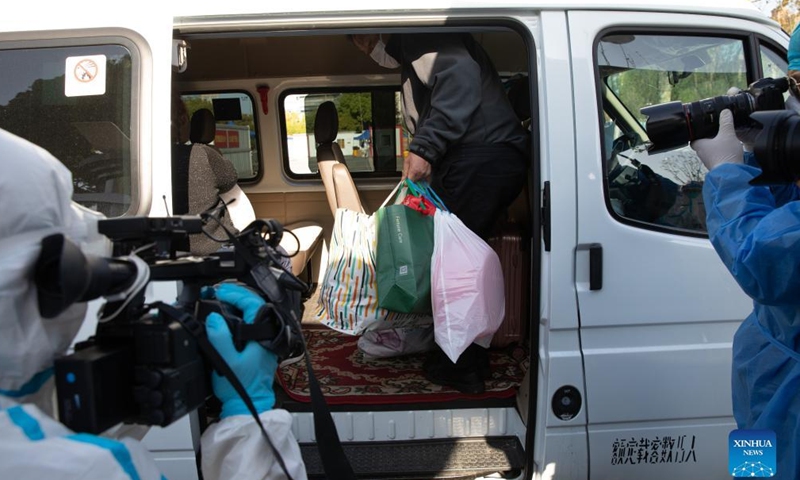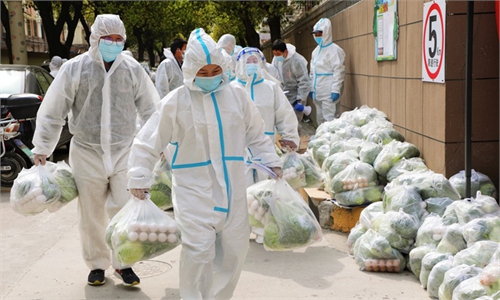Over 14,000 people in Shanghai discharged from hospital; 7,565 residential communities lift lockdown

A patient who has recovered from COVID-19 leaves a makeshift hospital converted from Shanghai Convention & Exhibition Center of International Sourcing in Shanghai, April 9, 2022. Photo:Xinhua
More than 3,000 people were discharged from hospital or released from medical observation on Sunday in Shanghai, making the total number up to 14,000 since the COVID-19 resurgence in March, as the city vows to establish a smooth mechanism to ensure residents go back home safely.
By Sunday, more than 14,000 people including COVID-19 patients and asymptomatic carriers had been discharged from hospital or released from medical observation since the latest flare-up, according to the Shanghai Health Commission.
With more people to be discharged from hospital or released from medical observation, there are also rising concerns over whether this group will be re-infected or spread the disease onto others.
The problem received wide attention two years ago, and the facts have proven that those residents who are re-infected haven't spread the disease onto others, Hu Bijie, director of the infectious diseases department at Zhongshan Hospital, said at Monday's press briefing.
The researchers have collected samples from people's nasopharynx, throat and anus, but no virus has been cultivated from the samples, Hu said. He also noted that it's failed to detect complete virus sequences from the samples. In other words, the virus from the samples is dead.
The research results at home and abroad are consistent, which proves that re-infected people are not contagious, according to Hu.
"We need to establish a cohesive mechanism to ensure patients can be admitted into hospitals or makeshift centers and discharged in an orderly manner," Wu Jinglei, director of the Shanghai municipal health commission, said at Monday's press briefing.
All people discharged from hospital or released from medical observation will be sent back home under closed-loop management; and special working groups are required to be in charge of the related transfers, Jiang Rui, director of the Shanghai Civil Affairs Bureau, said at the press briefing.
Those people who meet the requirement to go back home should follow the rules to take self-monitoring at home for seven days and reduce their contact with other family members to reduce risks, said Jiang.
For those special groups such as the elderly living alone, community working staff should take more care about them.
Shanghai on Sunday registered 914 locally transmitted COVID-19 cases and 25,173 local asymptomatic infections. The city has now reported over 200,000 positive cases from March 1.
A total of 25,996 COVID-19 abnormal results have been detected amid the latest round of citywide nucleic acid tests covering 25.12 million residents as of 8 am Monday in Shanghai. Among the 25.12 million residents, 21.52 million tests have been completed and results are out, with the rest still being rechecked, according to the authorities on Monday.
Shanghai will release the first batch of a list covering regions under lockdown, control and precaution on Monday. Some 7,565 residential communities have been classified as precaution-level, which means residents in these regions will be allowed to move within certain areas.


